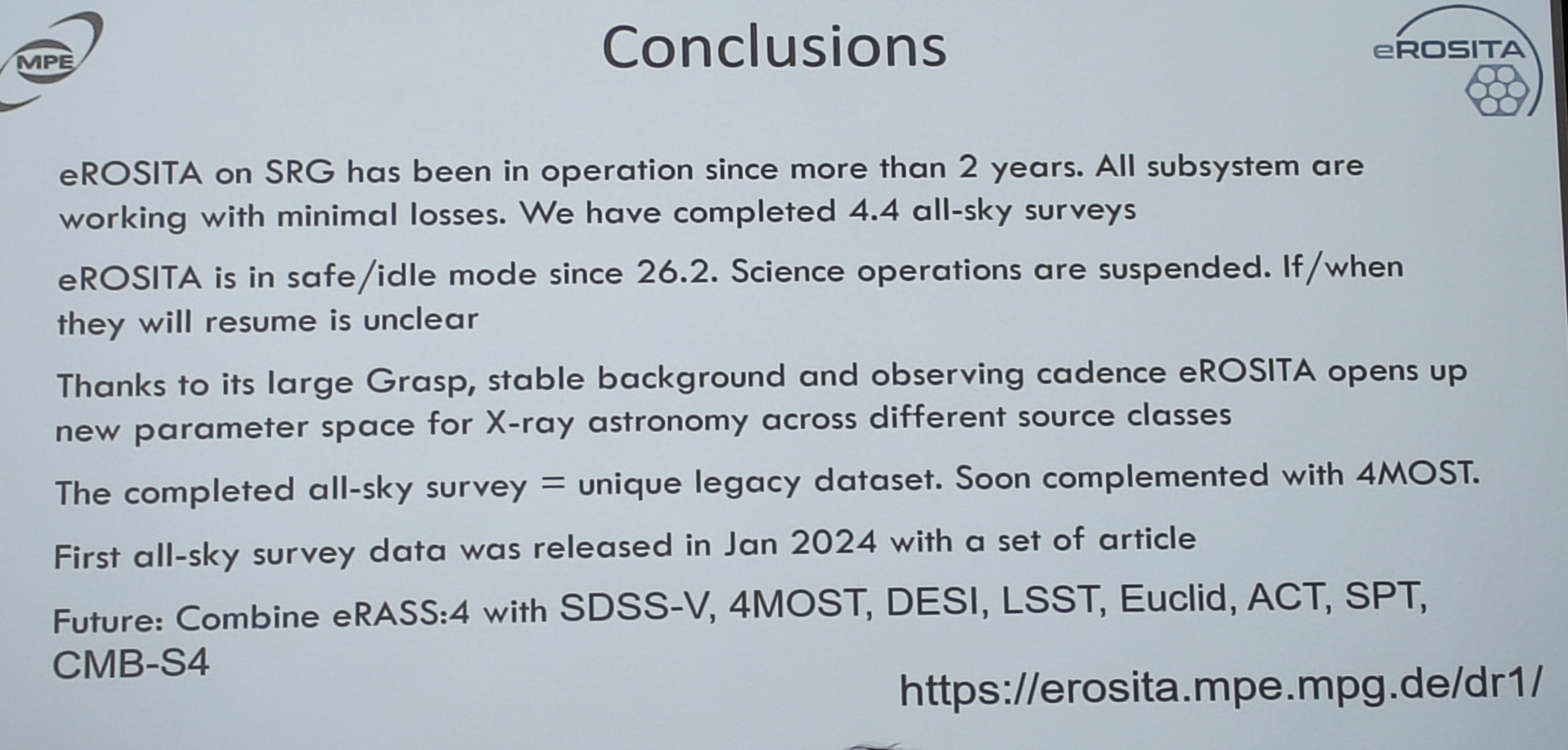Title: X-ray emissions from the large scale structure of the Universe
CGM
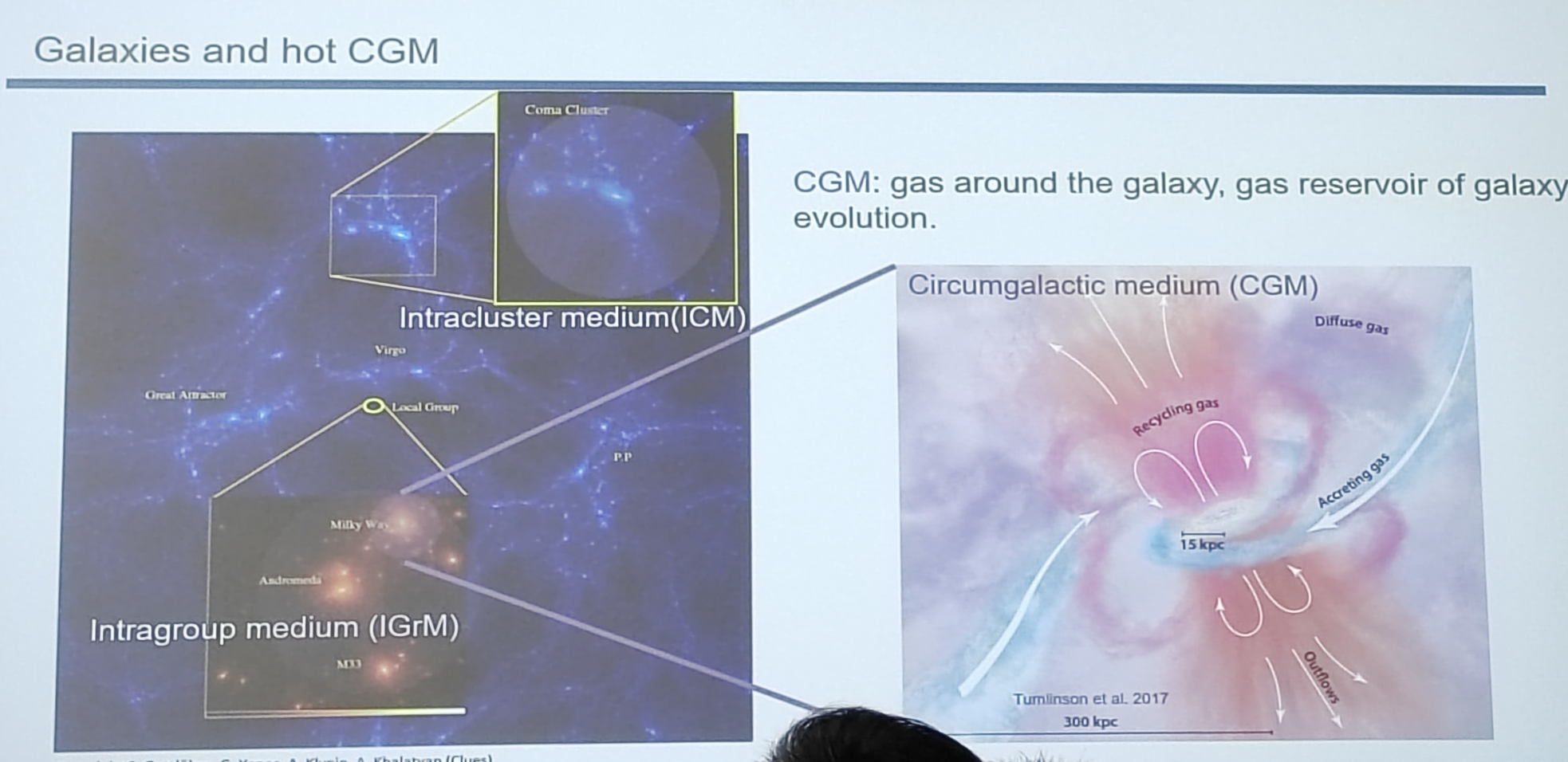
eROSITA bubbles
Such a kind of bubbles are also found in Milky-Way like galaxies in TNG simulation.
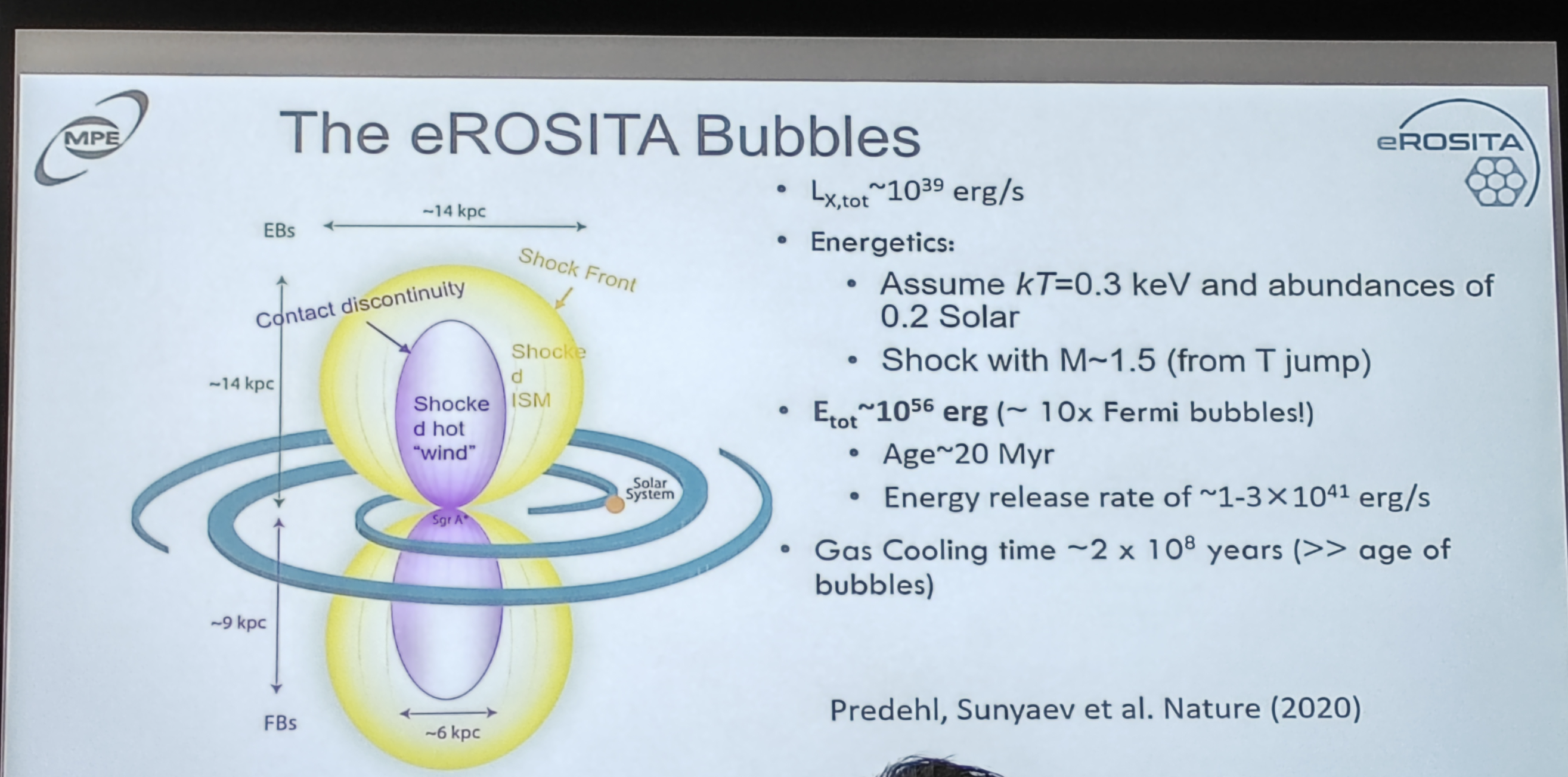
Star-forming and quiscent galaxies

The y-axis is the X-ray luminosity from CGM.
The right figure indicates that the main driver for the X-ray luminosity from CGM is the halo mass, i.e., it is the virialization of the halo that drives the X-ray luminosity, not the feedback from the galaxies (not the interplay between CGM and the galaxies). Through virialization, the gas in the halo is heated up by the accretion shock to a temperature of
Baryon fraction inference
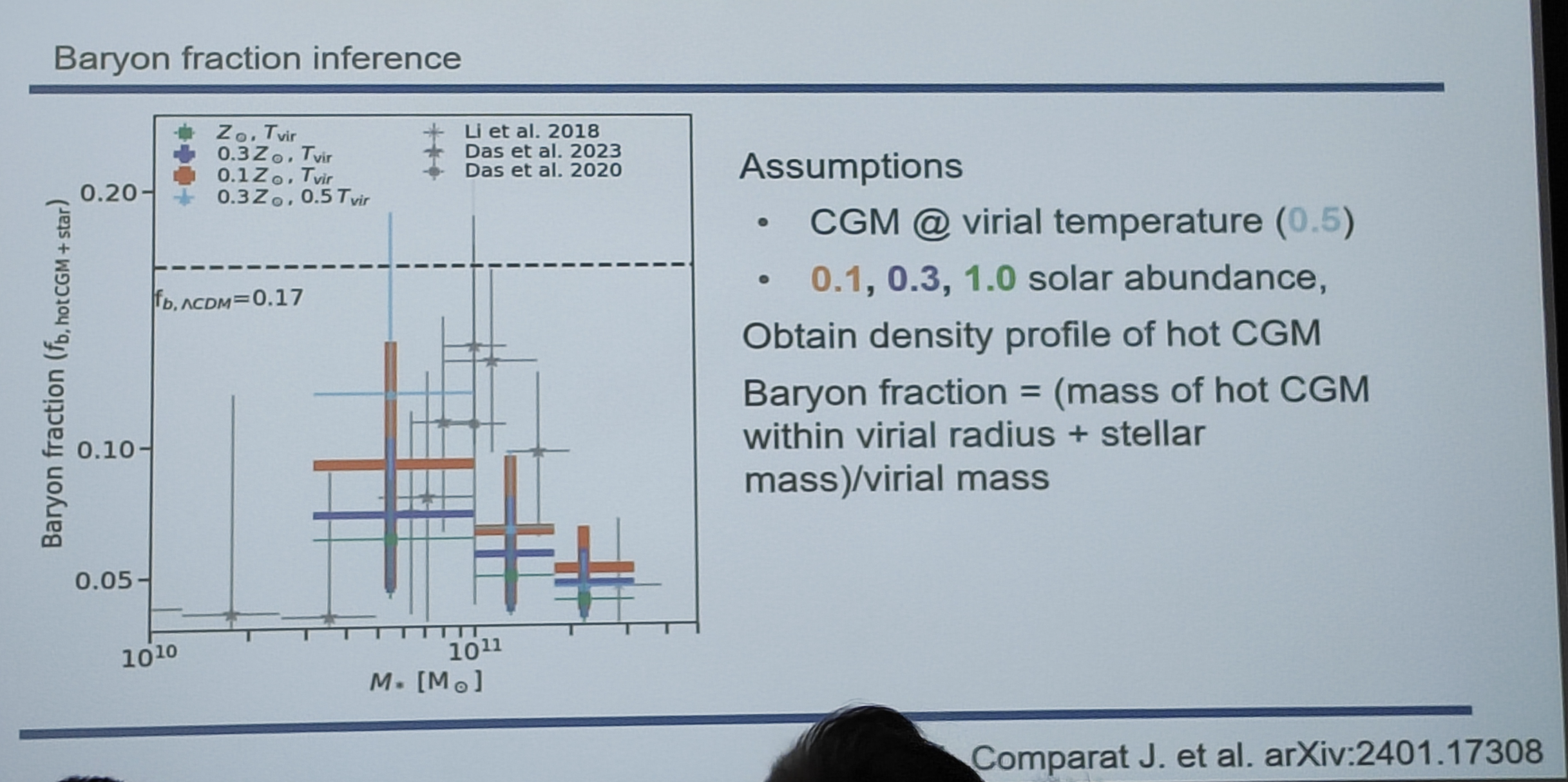
Stack galaxies and boost of satellite galaxies
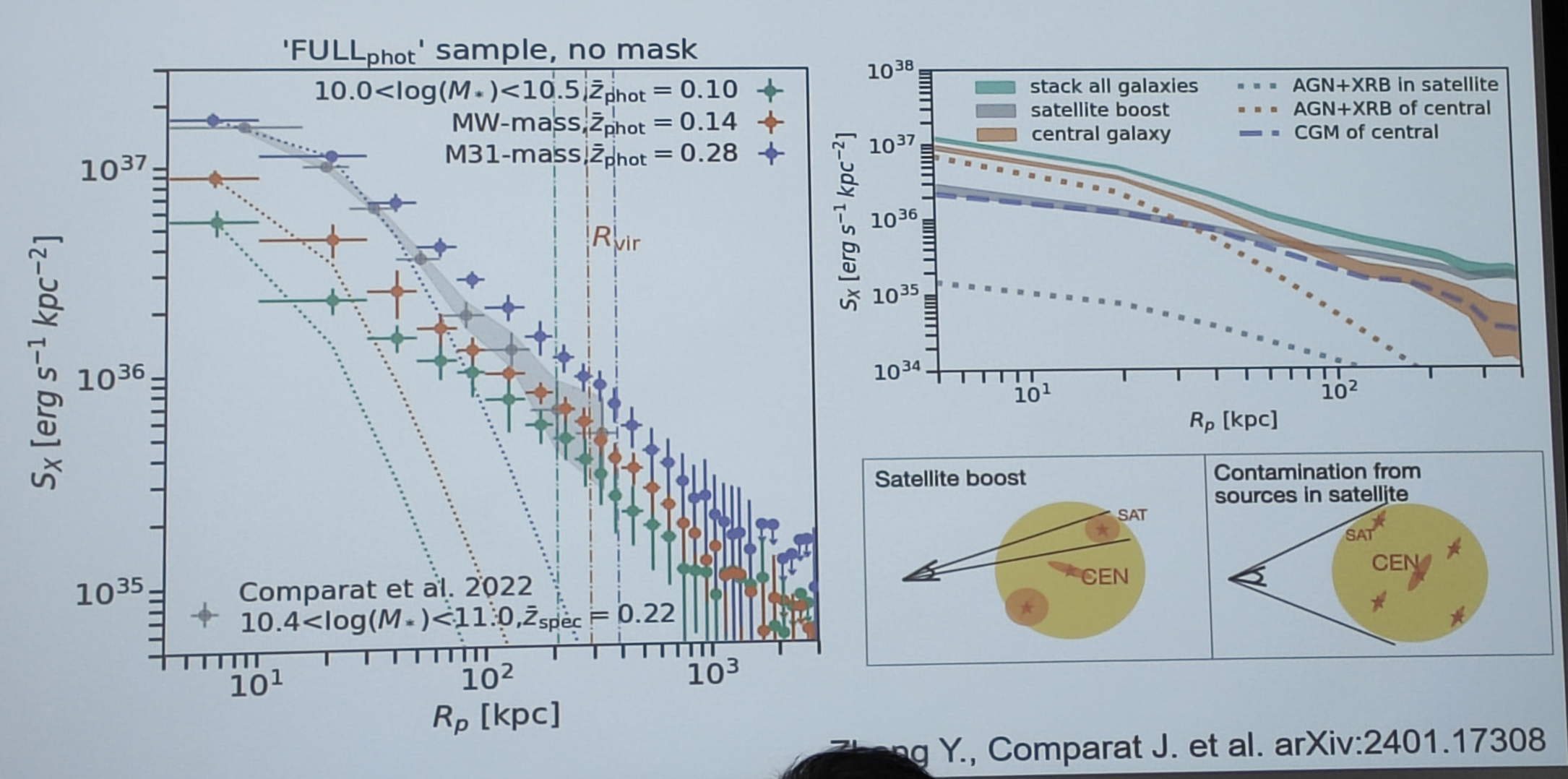
Abundance and temperature of the outer skirts of hot CGM
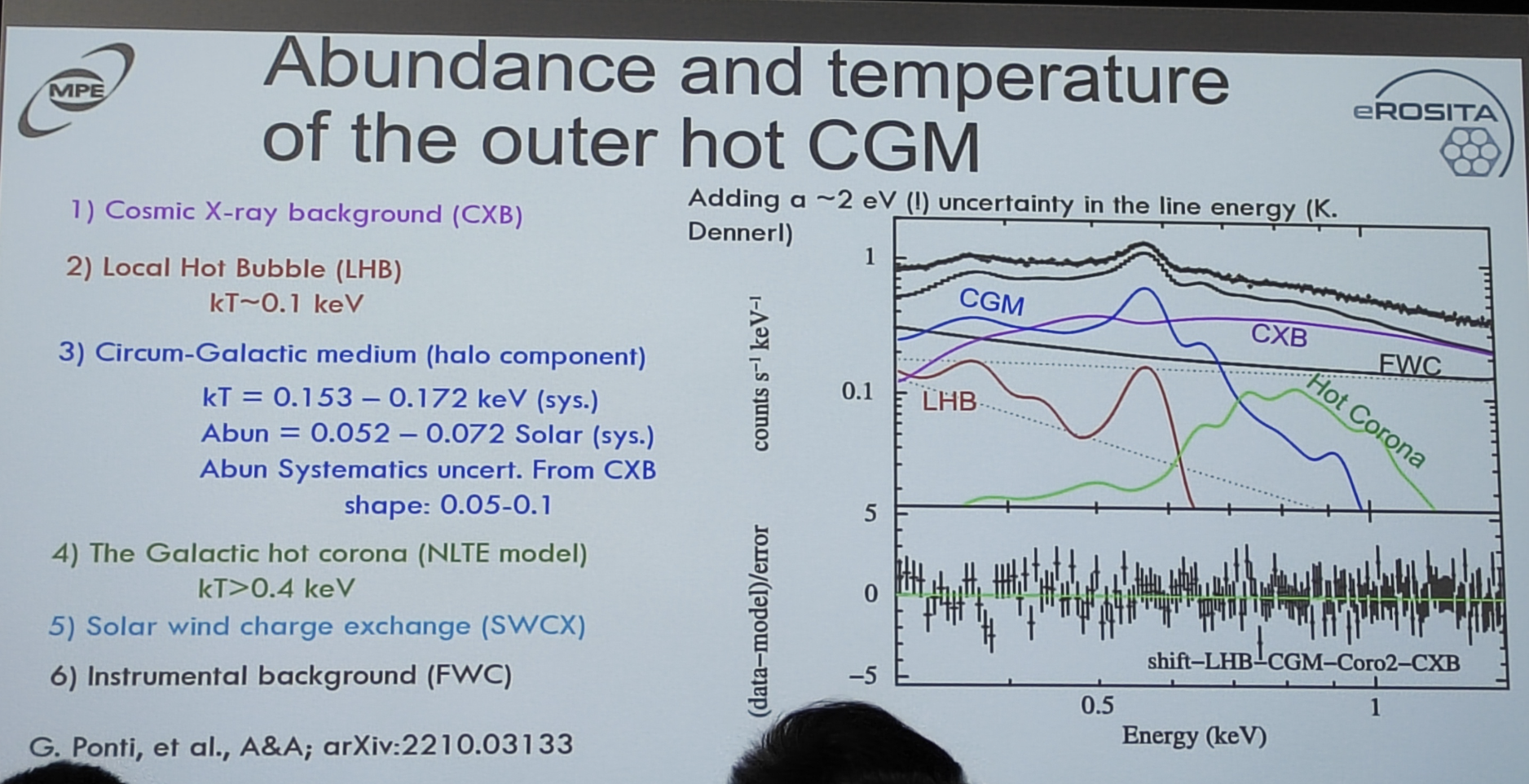
Clusters and groups
Constraints on cosmological parameters
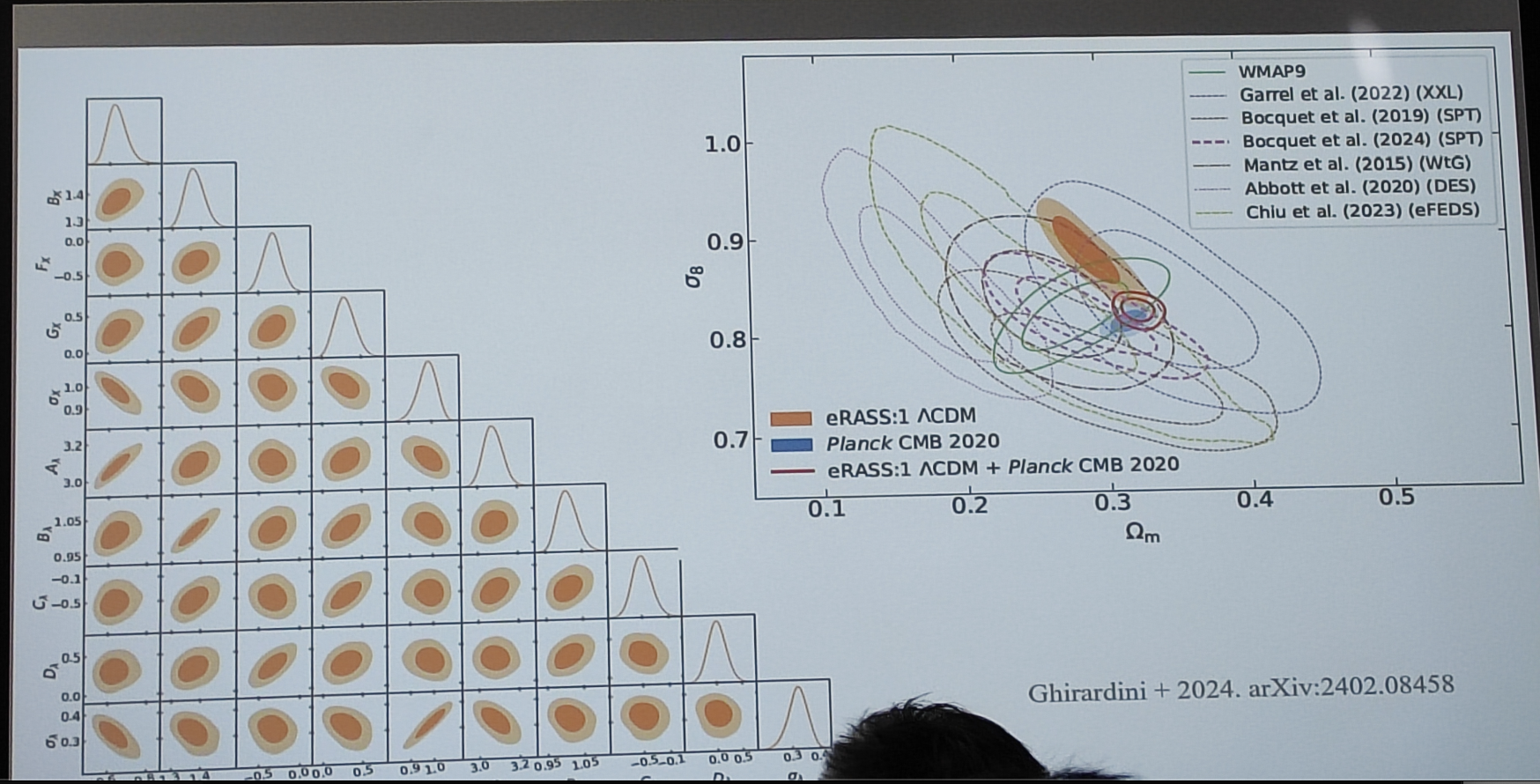
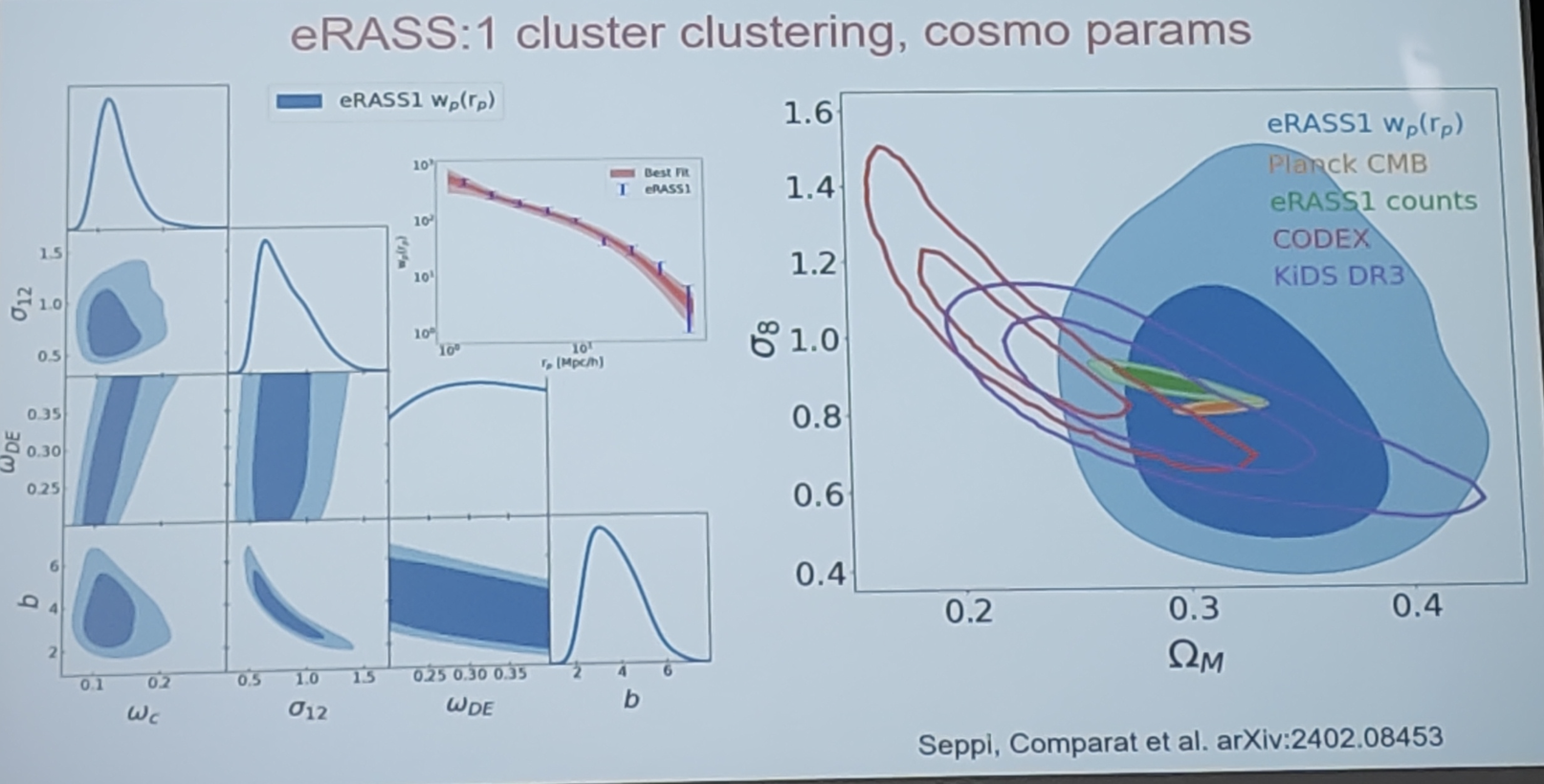
Conclusion
